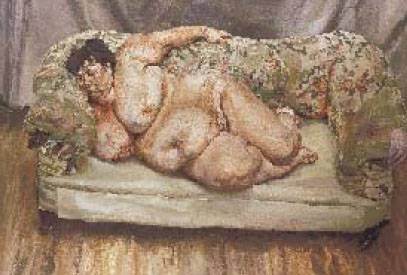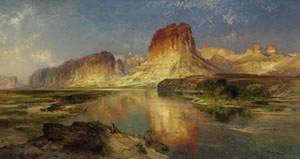
Paul Gauguin – Figure tahitienne
“Figure tahitienne”, an inedit wood sculpture by Paul Gauguin offered for sale at Sotheby’s, May 2008
Text by F. F.
]]>
During his first visit to Tahiti (June 9, 1891 – June 14, 1893) Gauguin falls under the spell of the legendary beauty of Tahitian ladies. Upon his arrival, he draws a set of impressive portraits charged with nobility. These drawings on paper have a sculptural depth. The faces, like masks, bear a profound mysticism, they express the same feelings of melancholy and depth. Many represent a psychological state known among Polynesians as “faaturuma” in their dialect, resignation. Tahitians, during moments of solitude or while posing for a painter or a photographer, express a mood that represents a kind of melancholia twist to meet the universe of the “tupapau” (spirits of the dead). In this a wake dream, the Polynesian observe the present through the prism of the past.
Our sculpture with the eyes half shut illustrates a mood unknown to Westerners. Gauguin enters here his first feelings for Tahiti . He is seeking «ecstasy, peace and art» and finds only silence, the torpor of tropical nights on a island where nothing much happens. «Lately, my mood is getting somber» he writes to his wife Mette.
The same expression can be seen on prints of contemporary photographers of Gauguin in Tahiti (Charles Spitz, Henri Lemasson…). The artist actually drew his inspiration from his collection of photographs. Namely the paintings “Pope Moe” in 1893 (Wildenstein 498), “Teha’amana” , 1893 (W 497), “Portrait of Women” 1899-1900 (W 610)…
The facial lines are of exceptional beauty.The work is in a heavy root of iron wood Casauarina equisetifolia. The great quality of this wood carving lies in its primitive power. Only the head of the Tahitian, her long hair, a breast and her hand are shown. In a letter dated May 1892, he wrote: «I have 11 months of work done, and I have 44 fairly large canvases… some drawings and sketches… and a few carvings» . This sculpture was certainly included this inventory. Among his acquaintances where the settler Bambridge and the lawyers Auguste Goupil and Léonce Brault, also a printer. All three appreciate Gauguin’s work and his polemicist character.
The years 1891-92 are difficult, the painter is hospitalized and in dire need of money. In his letters, he talks about his local sales. Bambridge commissioned the portrait of his wife (W 243), Goupil buys the “Te matete“ fan of 1892 and a wooden mask representing a Tahitian lady, similar to this drawing. This sculpture is now lost. In 1903, while searching for remnants of Gauguin’s works in Tahiti and the Marquesas islands Victor Segalen saw it and sketched it.
Léonce Brault had probably acquired our carving from Gauguin at the that time. But this dating is not confirmed as the painter maintained until his death a close relationship with this friend.
In 1900, the lawyer Léonce Brault publish his satirical newspaper “Les Guèpes” (The Wasps) after having subscribed to its very insolent periodic “Le Sourire“ (The Smile“). In 1903, Gauguin lives in the the Marquesas Islands and picks Brault, , as his lawyer for his appeal trial after his condemnation based on false accusations. Constantly in conflict with the colonial and religious authorities on the island of Hiva Oa , he revealed contraband and prostitution trafficking by the gendarmes with the crews of American whaling ships calling at the Marquesas Islands . He also opposes acts of the governor to defend unfairly taxed natives. All these accusations assured him to be sentenced in court. He has full trust in Brault to rehabilitate him during the appeal procedure. This case affects him very much, « it’s killing me » he writes to Henri de Monfreid. He dies on May 8, 1903 , before the trial could be held. His last known letter is to his lawyer, to whom he explains his line of defense.
Follow us on:


